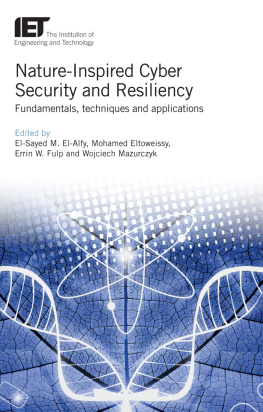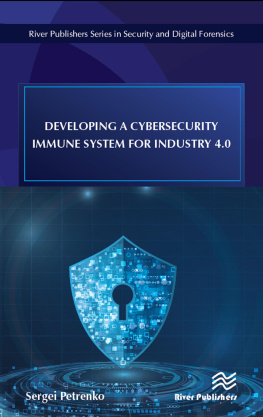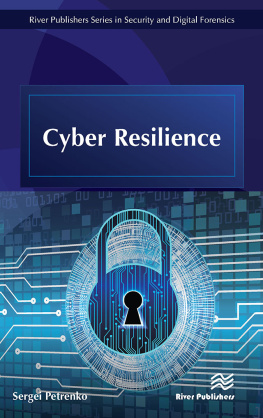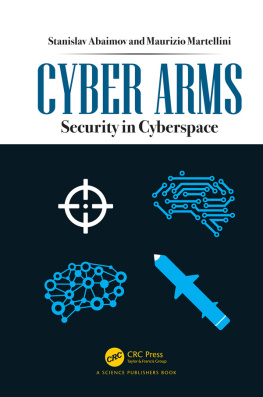Chapter 1
Nature-inspired analogies and metaphors for cyber security
Elbieta Rzeszutko
1Cybersecurity Division, Institute of Telecommunications, Warsaw University of Technology, Poland
The soaring number, growing complexity and the diversity of network attacks is overwhelming. The big picture is further affected by the increasing sophistication of modern malicious software. The observed state of matters call for action. The security community is urged to seek for other, promising directions which cyber security research and development should follow. We are currently in a state where current countermeasures are progressively showing their limitations and are unable to withstand new waves of threats consider, for example, the recent plague of ransomware. It is now time for security professionals and researchers to turn to nature in the search for inspirations for the next-generation defence systems.
Humankind has an extensive history of benefiting from nature-based inspirations. Many everyday inventions that are today mundane are the result of biomimicry. Consider, for example, the Velcro which is a fabric hook-and-loop fastener that was invented by closely inspecting burdock burrs. Success of this and the multitude of other bio-inspired inventions is not surprising since nature has over three billion years of experience in the evolution of various types of organisms and adapting them to the diverse environmental conditions.
In the Internet, it has been already discovered that many current offensive and defensive solutions (unconsciously) mimic the ongoing arms race between various species in nature. Moreover, many of the virtual worlds current network attack schemes have been, in fact, long known. Worms, spam campaigns, botnets, and others, along with defensive techniques such as firewalls and intrusion detection/prevention systems (ID/PSs), have been found to have counterparts in nature [].
Additionally, it must be noted that we had already been on the right path once: the first generation of cyber security solutions was, in fact, nature-inspired. For example, the human immune system inspired threat detection based on signature analysis. However, since then the threats have evolved significantly to make these first-generation defences obsolete. What is worse, we ceased to follow the biomimicry path the countermeasures did not evolve effectively and fast enough. Therefore, in order to survive, cyber security defences must be adapted, with the aid of nature-based inspiration, to be able to efficiently counter the new threats. Fortunately, the next generation of nature-inspired cyber security research is now emerging (see, e.g. the recent detection systems taking inspiration from ants []). However, we also find that the newly achieved developments and knowledge are scattered because the field lacks a more general framework and a general overview.
Obviously, the mappings from nature to the cyber world will not be faithful copies as exact mappings are not realistic in practice. Some of the reasons why exact mappings are not always possible include:
Many mechanisms and relationships in nature are very complex and not yet sufficiently understood to correctly map them to the virtual world.
In nature, individual organisms within a species are replaceable, and death is a critical driver of evolutionary adaptation, but for many security-critical systems (e.g. military, utilities and other critical infrastructure), any loss, compromise or corruption is unacceptable. Honeynets/honeypots may seemingly escape this rule as they are employed to impersonate a real host/network and their compromise is permissible for the sake of obtaining knowledge regarding the enemy, but they are not a target per se. Breach of their security does not result in the loss of sensitive data.
The main aim of each organism is to reproduce and survive, whereas computers/networks have many different goals (specific tasks and functions).
Despite these imperfect mappings, we strongly believe that there are still many important lessons from nature that can benefit and improve cyber security. Moreover, if we follow a SapirWhorf hypothesis [], which states that the language has a direct impact on thoughts, then finding analogies between cyber security and nature with its accompanying terminology, concepts and solutions can have a tremendous impact on the way we think about solving cyber security problems.
Nevertheless, drawing inspirations from the organisms characteristic features or defence mechanisms is a must. Considering the pace at which new threats are evolving it is an even more urging necessity than before.
This chapter will be focused on investigating the most notable nature-inspired analogies and metaphors for cyber security. Particularly, we first show how inspirations from nature had influenced the history of inventions and then we point out nature-based systems features that are extremely important from the cyber security perspective. On this ground, we describe cyber security ecology (CSE) in order to understand better the main actors and their interactions. Next, we review some of the recent and interesting nature-inspired analogies and metaphors for cyber security and provide an example of the generalised attack scenario. Finally, the last subsection concludes this chapter.
1.1 Historical examples of the nature-inspired inventions
Nature and technology are intertwined, sometimes inseparably. Through deliberate actions or through mere accident, natures ways are reflected in the everyday life of any human. People have sought inspiration in nature for as long as historical accounts date back.
A brief glimpse into ancient history gives us the feeling how it must have been to observe the environment and replicate its mechanisms to solve real-life problems. Ancient Romans have noticed that trees use resin to seal their wounds and cut off entrance pathways for pathogens. Resin also prevents decay and reduces the amount of water stored in the tissues. Not surprisingly, the Romans have put this knowledge to use. Burial sites in Great Britain reveal that bodies were preserved with resin, and it was used in ancient medicine as an antiseptic.
Moving even further back in time, to ancient Greece, we can name one other invention that strikes much resemblance living organisms. It is highly likely that the antique Archimedes screw pump was inspired by the helical shape of molluscs shells.
Sometimes the design process was carried out with the ultimate goal of replicating natures formula for solving a particular problem. This was the case with flying, which long, fascinated people. Many have attempted to replicate how birds fly, among them the notable Leonardo da Vinci, but the ones to succeed were the Wright brothers, who learned the aerodynamics of the wing. In other cases, it was a mere accident that showed how a phenomenon occurring in nature can be put to use in a completely new situation. One notable example is how a Japanese engineer, Nakatsu, had tackled the problem of abrupt pressure changes that the Shinkansen bullet train was undergoing. He transferred his knowledge of birds and adapted the train engine shape to reflect that of a kingfisher. Currently, scientists and designers from different fields look into the ingenuity of nature to find solutions for their challenges. The influence can be seen from architecture, through product design, medicine, up to more surprising areas, such as space technology.
The motivation is sometimes for aesthetic reasons, sometimes it is mere pragmatism that drives the creative process. British architect Laurie Chetwood built his house to mimic the life cycle of a butterfly [], after the Haiti earthquake. The modular housing would be self-sustainable and serve as a replacement for the homes devastated by the 2010 catastrophe. The French architect mimicked the structure of the coral reef to ensure good ventilation, exposure to sunlight and ensure low-cost construction. The modules for the building are prefabricated and joined together to form a coral-like mesh.












